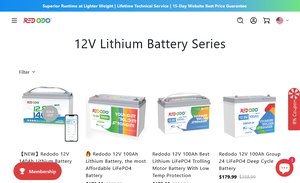How Temperature Affects 12V Battery Performance
Corps
12V batteries are ubiquitous in various applications, from automotive to renewable energy systems. Understanding how temperature impacts their performance is crucial for optimizing their use and ensuring longevity. Temperature variations can significantly influence a 12V battery’s efficiency, lifespan, and safety. This article delves into the effects of temperature on 12V battery 12V performance and provides practical tips for managing these impacts.
The Science Behind Temperature and Battery Performance
Batteries operate through chemical reactions, and these reactions are sensitive to temperature changes. For 12V lead-acid batteries, the electrolyte solution’s behavior is particularly influenced by temperature. Here’s a closer look at how different temperature ranges affect these batteries:
-
High Temperatures:
- Increased Reaction Rates: At elevated temperatures, the chemical reactions within the battery accelerate. This can enhance the battery’s performance temporarily, delivering higher power output. However, this increased activity can also lead to faster degradation of the battery’s components.
- Reduced Lifespan: Prolonged exposure to high temperatures can cause the battery’s plates to corrode and the electrolyte to evaporate, significantly shortening the battery’s lifespan. A rule of thumb is that for every 10°C increase in temperature, the battery’s lifespan is cut in half.
- Safety Concerns: Overheating can lead to dangerous situations such as thermal runaway, where the battery generates heat faster than it can dissipate, potentially causing it to melt or explode.
-
Low Temperatures:
- Decreased Reaction Rates: Cold temperatures slow down the chemical reactions within the battery, reducing its efficiency and power output. This is why car batteries often struggle in winter conditions.
- Reduced Capacity: At low temperatures, a battery’s capacity can decrease by as much as 20-50%. This means a fully charged battery might only provide half its usual power when it’s cold.
- Increased Internal Resistance: Cold temperatures increase the internal resistance of the battery, making it harder for the battery to deliver power. This can lead to difficulties in starting engines or running high-drain devices.
Practical Tips for Managing Temperature Effects
-
Insulation and Heating:
- In cold environments, using battery insulation blankets or heaters can help maintain the battery’s temperature within an optimal range. This is particularly useful for automotive batteries in regions with harsh winters.
-
Ventilation and Cooling:
- In hot climates, ensuring proper ventilation around the battery can help dissipate excess heat. Using fans or cooling systems in battery enclosures can also prevent overheating.
-
Regular Maintenance:
- Regularly checking and maintaining the battery’s electrolyte levels and cleaning the terminals can help mitigate some of the adverse effects of temperature fluctuations. Ensuring that the battery is properly charged and not overcharged is also crucial.
-
Choosing the Right Battery:
- Some 12V batteries are designed to perform better in extreme temperatures. For instance, AGM (Absorbent Glass Mat) and Gel batteries tend to handle temperature variations better than traditional flooded lead-acid batteries. Selecting a battery that suits your specific climate can enhance performance and longevity.
Conclusion
Temperature plays a pivotal role in the performance and lifespan of 12V batteries. While high temperatures can boost performance but shorten lifespan, low temperatures can reduce capacity and efficiency. By understanding these effects and implementing measures to manage temperature impacts, users can ensure optimal performance and extend the life of their 12V batteries. Whether through insulation, ventilation, or selecting the right battery type, taking proactive steps can make a significant difference in maintaining reliable power in varying environmental conditions.












commentaires